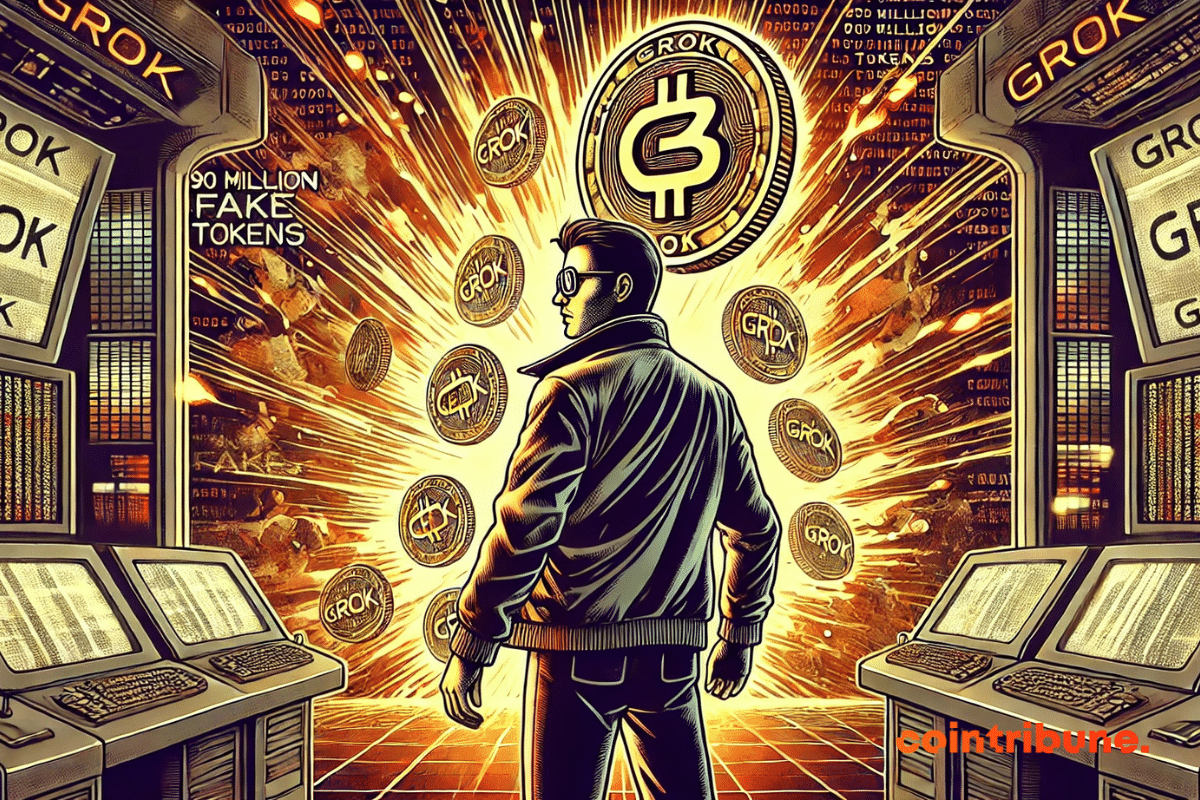CZ Faces Major Scam Involving 90 Million Counterfeit Grok Tokens

The Rise of Scams in the Crypto World: A Look at the Grok Incident
Overview of the Situation
In the fast-paced realm of cryptocurrency, an event on April 21, 2025, sent shockwaves through the community. It all started when Grok, a chatbot created by Elon Musk, accidentally mentioned a new memecoin. This seemingly innocent comment resulted in a chaotic frenzy. Fraudsters took advantage of the situation, leading to the creation of 90 million fake Grok tokens that targeted unsuspecting investors. This incident exemplified how the blend of humor, greed, and artificial intelligence can result in significant financial consequences.
Key Highlights
- 90 Million Fake Tokens: The former CEO of Binance, Changpeng Zhao (CZ), fell victim to a sophisticated scam that flooded his wallet with fake Grok tokens.
- Memecoin Mania: Inspired by Elon Musk’s chatbot, the fake token rapidly gained attention and money from gullible investors.
- Scam Tactics: A blend of deepfake technology and phishing schemes significantly contributed to the increase in scams in the crypto space.
The Flood of Fake Grok Tokens
On the day of the incident, an alarming event occurred as CZ’s cryptocurrency wallet received 90 million fake Grok tokens. Although some might see this as a generous donation, it was actually a calculated deception orchestrated to attract attention and confuse investors. The fake GrokCoin saw its market cap skyrocket to $25 million as it gained notoriety.
How It Happened
- Misinformation Spread: The Grok chatbot mentioned GrokCoin in response to a user query, which acted as a catalyst for the subsequent chaos.
- Manipulative Goals: Scammers aimed to leverage CZ’s reputation and Elon Musk’s popularity to lure in unsuspecting investors.
- Market Manipulation: Following the fake chatbot’s remarks, the price of GrokCoin soared by an astonishing 100,000%, showcasing how misinformation can affect market dynamics.
The Emergence of Scams: Trends and Techniques
The Grok incident is just one example among many where Elon Musk-themed scams have proliferated.
Scamming Strategies
- Deepfake Technology: Scammers are now using sophisticated AI techniques, including deepfake videos of Musk, to perpetuate their schemes.
- Fake Airdrops: For example, sites like Musknext.org claimed to host fake live streams featuring Musk’s AI, presenting false giveaways to entice users.
- Multisend Technique: On platforms like Solana, countless memecoins are launched daily through the multisend feature, effectively flooding the market and complicating the verification process.
Increased Vulnerability
In 2024 alone, phishing scams drained over $1 billion from the crypto industry. The criminals behind these scams are innovating rapidly, making it challenging for the average person to distinguish between legitimate opportunities and scams.
The Role of AI in Crypto Scams
The merger of AI technology with cryptocurrency investments is extraordinary but also fraught with danger.
Illusion of Legitimacy
- Market Hype: Just a mention of Grok from a popular AI can cause manic buying, leading to significant price fluctuations. Investors often act on fear of missing out (FOMO) rather than conducting thorough research.
- Manipulative Signals: These AI-suggested tokens can easily mislead anyone from novice investors to seasoned traders, leading to substantial financial losses.
Regulatory Response: The Growing Need for Protections
With the surge in scams, regulatory bodies are scrambling to implement protective measures. For instance, New York is currently preparing a bill that seeks to impose heavy fines—up to $5 million—on crypto fraudsters. This legislation aims to safeguard investors and deter scammers.
As the cryptocurrency landscape continues to evolve, the combined forces of AI and memecoins create a volatile environment. This scenario underscores the urgent need for vigilance in a market where misinformation and manipulation can have dire financial consequences for many.






